The feature is in prod, the newsletter queued up. Social posts are scheduled. An engineer on standby for last minute fixes, someone from growth to respond to comments.
It's a feature launch, where months of work culminate. Your team did their best, scouting Amazon for ways to spend the bonus they're about to get. You hit publish on the blog article. The newsletter and social post goes out and the in-app notifications hit every new user.
The active user graph creeps up. The start of an exponential curve, you tell yourself. And then it stops creeping up—and starts creeping down. And then it stays there.
We've all been disappointed by launches, felt like we left something on the table. Whether you're in product, growth or design—every dud feels like there's something more we could've done.
But let's have some empathy: Marketing a novel feature to uninformed users is super hard!
It's not a routine procedure like cleaning out old Jira tickets or fixing bugs. It's a complex operation. Now that we
We've seen both sides of it: Some launches flooded us with leads, others got little attention.
If you're about to launch your first AI feature, make sure it's not a dud. Here's how:
Before launch: How AI launches are different
Unless you’re brand-new to product, you’ve probably launched plenty of “normal” features and products. But building with AI is more complicated. First, because you don’t want hallucinations like this to happen:

Second, your users might already know ChatGPT or other AI tools, which sharpens their expectation of your AI feature.
To ensure AI feature adoption, make sure you can answer these questions.
- What’s the benefit? Confused users don’t engage, so you need to communicate why your AI feature is useful. Aligning on this enables you and your team to communicate benefits well.
- How is this better/different? Many on social media or your email list might be on the fence regarding your product. AI is a chance to differentiate yourself and convince skeptics.
- What problem does this solve? Many AI features feel gimmicky. By knowing the pain points you alleviate, your feature becomes more relevant (even if your marketing doesn’t explicitly state that problem).
1. Aligning your team
Let’s assume you’re ready to release an AI-powered feature in your product. Especially if you’re doing it for the first time, it’s important to align product and marketing so you can accurately convey expectations and capabilities.
To align product and marketing, answer a few questions:
How to frame AI features
AI features can be difficult to communicate, especially to users who aren’t on the cutting edge of technology. Your target market influences how you describe AI.
Here are a few heuristics:
- If your product aims at technical people, specify infrastructure/models. This is especially important for dev tools where customers build on top of your software.
- Call it “AI” when you market to people who are excited to try new things.
- Use words like “magic” “smart” or “automated” to describe AI features to users who aren’t on the cutting edge of tech.
Let’s look at examples.
- AI company Replicate targets developers. They’re highly specific to the technology they use:
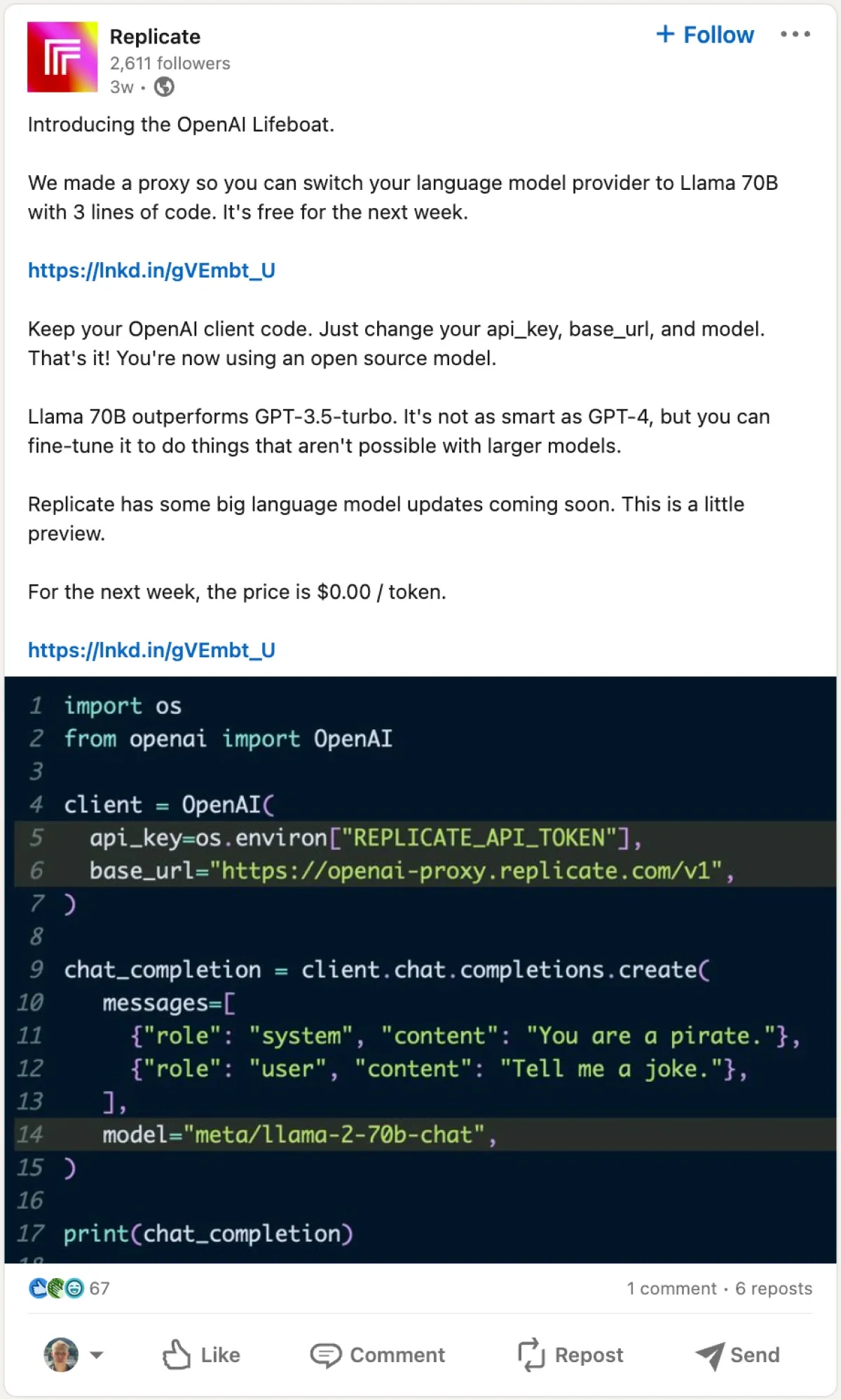
- Notion targets tech-savvy people, but isn’t itself a technical product. It marketed it’s AI launch like this:
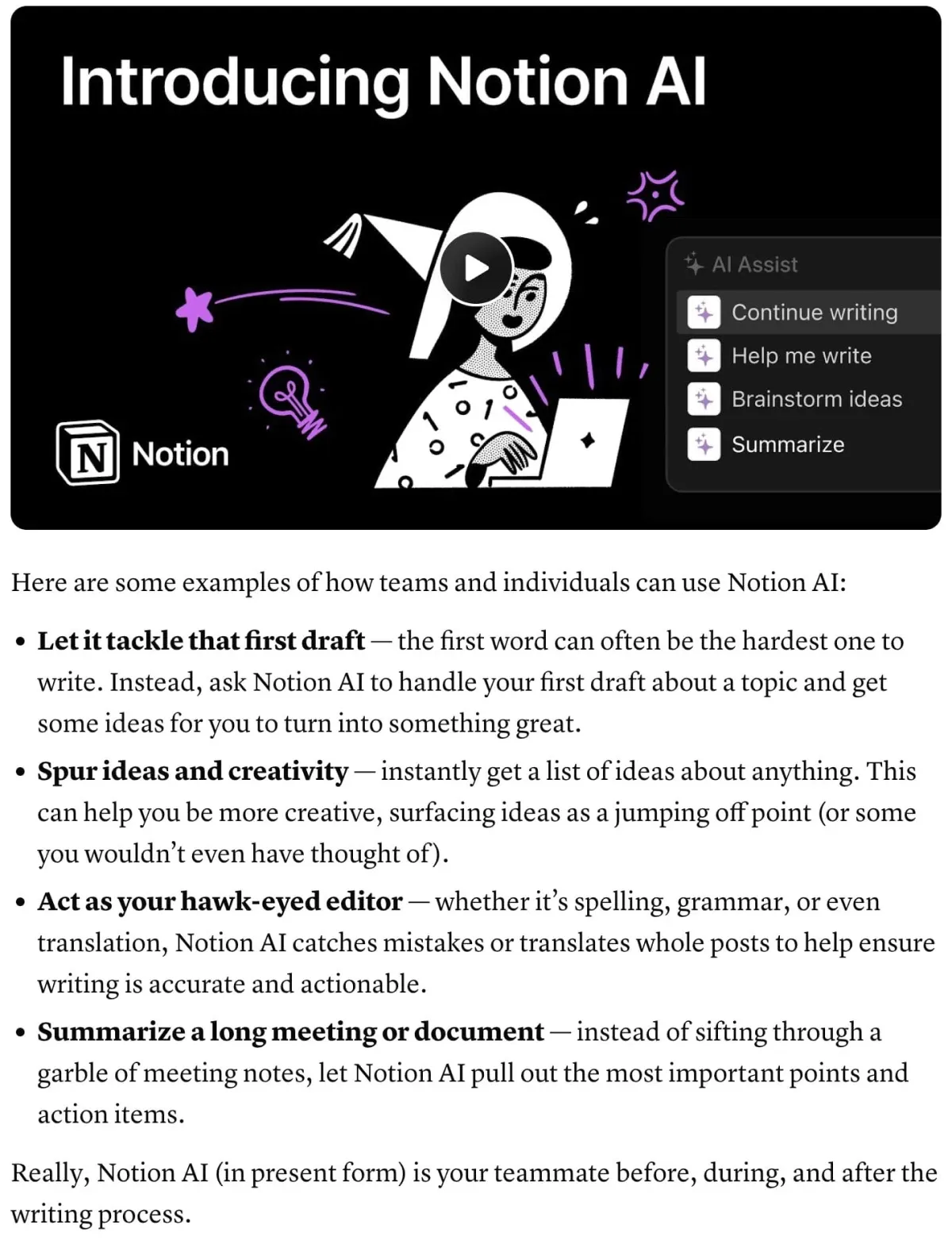
- Our customer Oyster launched an AI chatbot powered by Copilot which they called a “virtual hiring assistant”, only mentioning AI down in the hashtags.
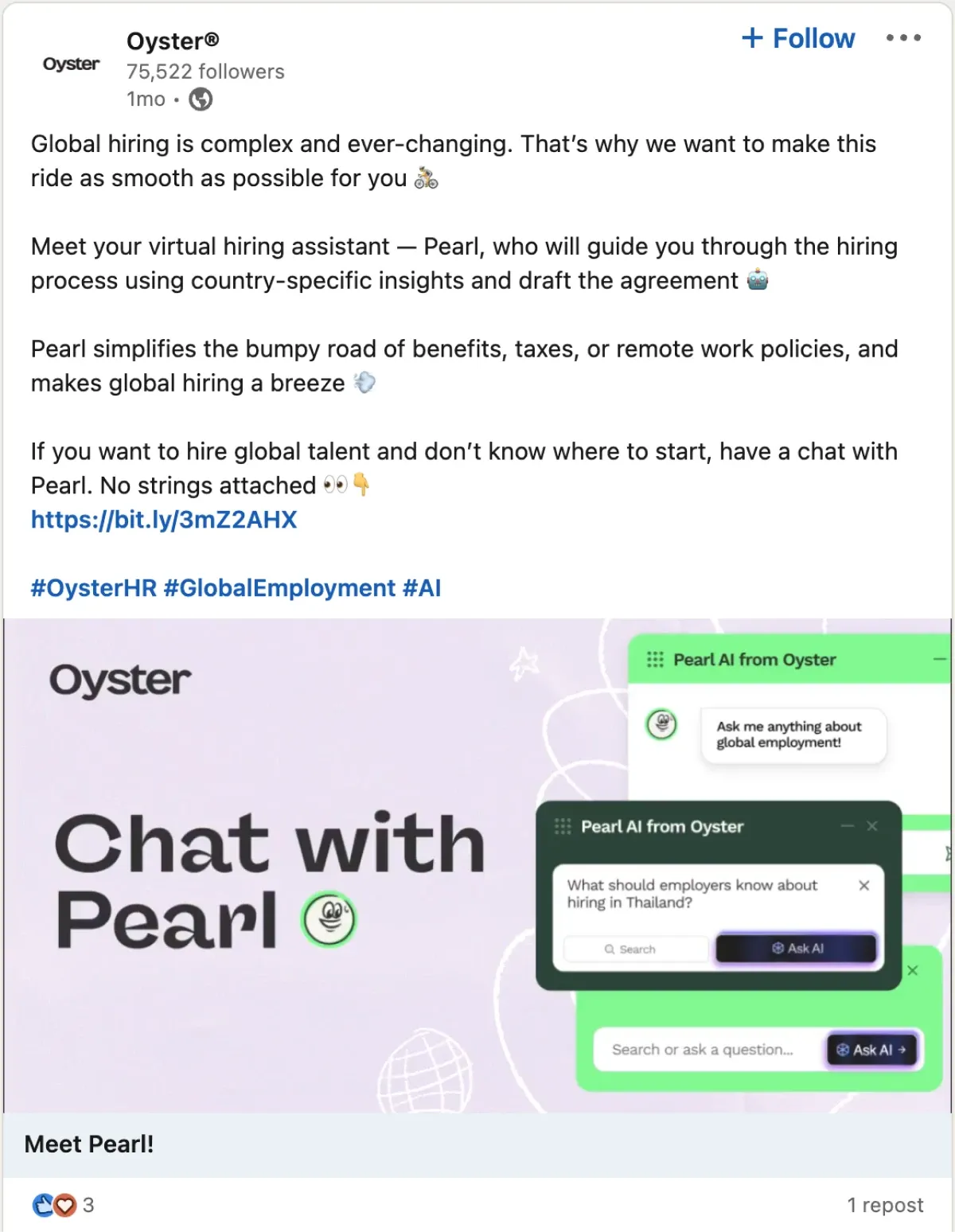
There are in-between versions here. Ultimately, what matters most is using wording users understand.
The above sound basic, but product and marketing rarely align on this level of detail. Once you have internal alignment, you can move faster and with less inter-team friction.
Let’s get into execution. While you can always do more, there are two main aspects to this:
- Marketing channels: This lets you attract new users (and revive existing ones)
- In-app communication: This helps you retain more users by offering a better experience.
Ensuring AI feature adoption: In-product assistance
Here are the CommandBar experiences we recommend:
- Announcement nudge: Activate your best audience with a non-annoying nudge.
- Product tour: Retain users by guiding them through your AI feature(s).
- Add docs to Copilot: Deflect support tickets by helping users help themselves
- Survey: Fine-tune your AI features by gathering user feedback.
Let’s dive into these in detail:
Announcement nudge
Create an announcement to share the news with your users. Here’s what we recommend:
- Targeting: Show the nudge to anyone entering the dashboard from the time the feature is live.
Make sure to not show it to first-time users, though. Someone who just signed up and doesn’t know your regular features will be overwhelmed if you introduce them to new features.
If you have a PLG motion, you can also ask free users to upgrade if your AI feature is behind a paywall.
- Buttons: Since your goal is feature adoption, the primary CTA should be to try out the feature. If you have a blog article or documentation, you could add a secondary CTA linking to it.
- Copy: Put the user’s benefit first instead of focusing on the feature/product itself.
Here’s what that might look like:
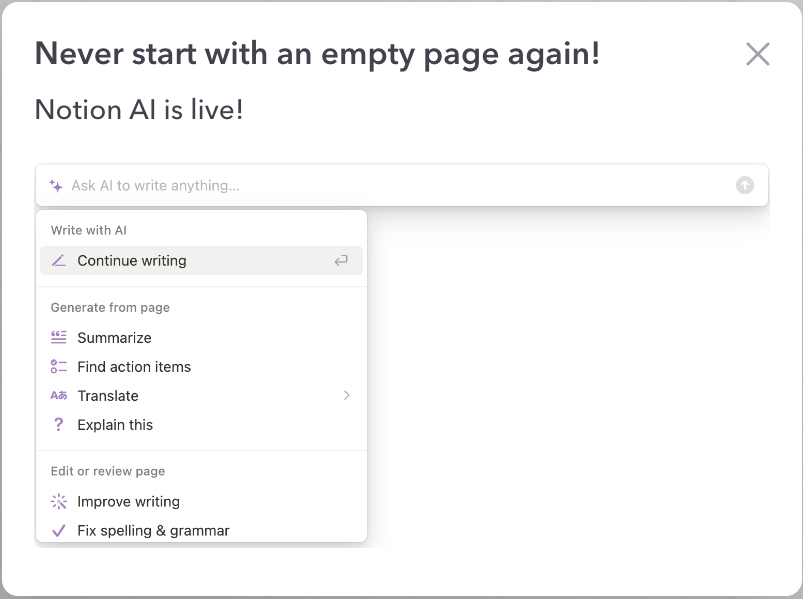
Product tour
Once users click the announcement (or enter the feature from a menu), walk users through the new AI feature with a short guided tour built in CommandBar.
We recommend making product tours short: Keep it to 2-5 steps. It’s exciting when you have a lot to show off, but don’t bore users (read our product tour guide for more on this).
- Targeting: Make sure the tour is voluntary. The best way to do this is to trigger it only when someone enters the feature for the first time.
- Copy: Focus on clarity and brevity. The point of the product tour is for the user to get into the feature. Every superfluous word keeps them from that.
- Micro-survey: As the final step in your product tour, gather some feedback on the tour.
An example:
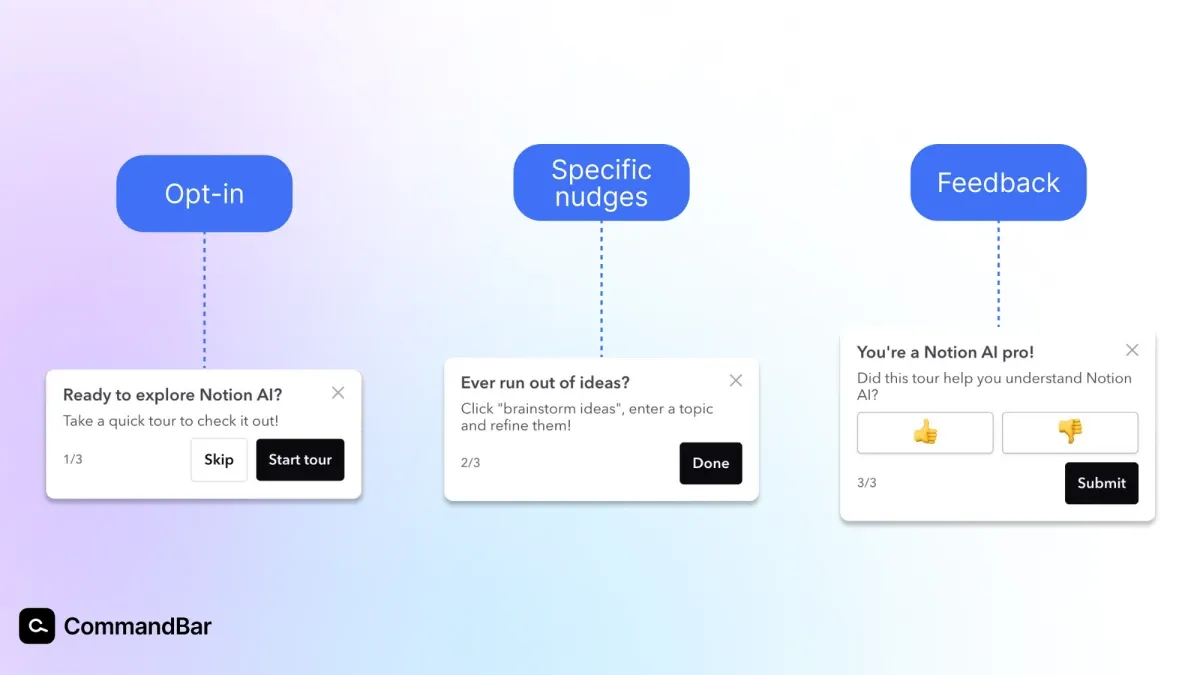
Add docs to Copilot
If you’re using our AI-powered customer support Copilot, import documentation and tutorials you’ve created. That helps users get answers faster. If you have CommandBar synced with your helpdesk provider, your documentation might already be in there. If not, follow the steps here.
Survey
If you’re betting on AI, you probably want to improve it over time. So survey your users so you can improve the feature. You could use an NPS survey and/or gather qualitative feedback with a text input nudge.
Depending on your product architecture, you can target this nudge in two main ways:
- Target your nudge at users who are on the URL that indicates them completing a workflow for the first time.
- Target your nudge at users who’ve completed a tracked event for the first time.
It’s tempting to get feedback from users who’ve successfully used your AI feature. But don’t neglect those who failed. If someone exits the flow without completing an action, that could be a good trigger for a feedback survey.
Make sure the copy is specific and bat-signals to users that their feedback is needed. Compare these two:
“We’d love your feedback!” ❌
“You just made your first AI image. How easy was that?” ✅
How to market your feature externally
After building in-app assistance, let’s get users to see it. You might have your own playbook, but there are a few product launch marketing essentials.
Before we get into those, it’s important to set expectations with your users.
Setting expectations for your AI features
Few users know AI well enough to know what to expect. That’s why it’s important to clarify what your AI can and can’t do. For users who are skeptical of AI, you can also explain what your AI won’t do and what it’s trained on .
If you’re launching Copilot as your first AI feature, you might communicate it this way:
“Copilot is an AI chatbot trained on our documentation and helpdesk. That means it answers any question you have without you digging through articles. That means it’s not a general-purpose AI. It can’t answer questions unrelated to our product. To get started with Copilot, just ask any question you have!”
Blog post
Write a brief blog post about the feature, what it can do for the user and what problem it solves. You can also add the story of why you built the feature. Your announcement nudge can link to this. Here’s an example from our customer Oyster:
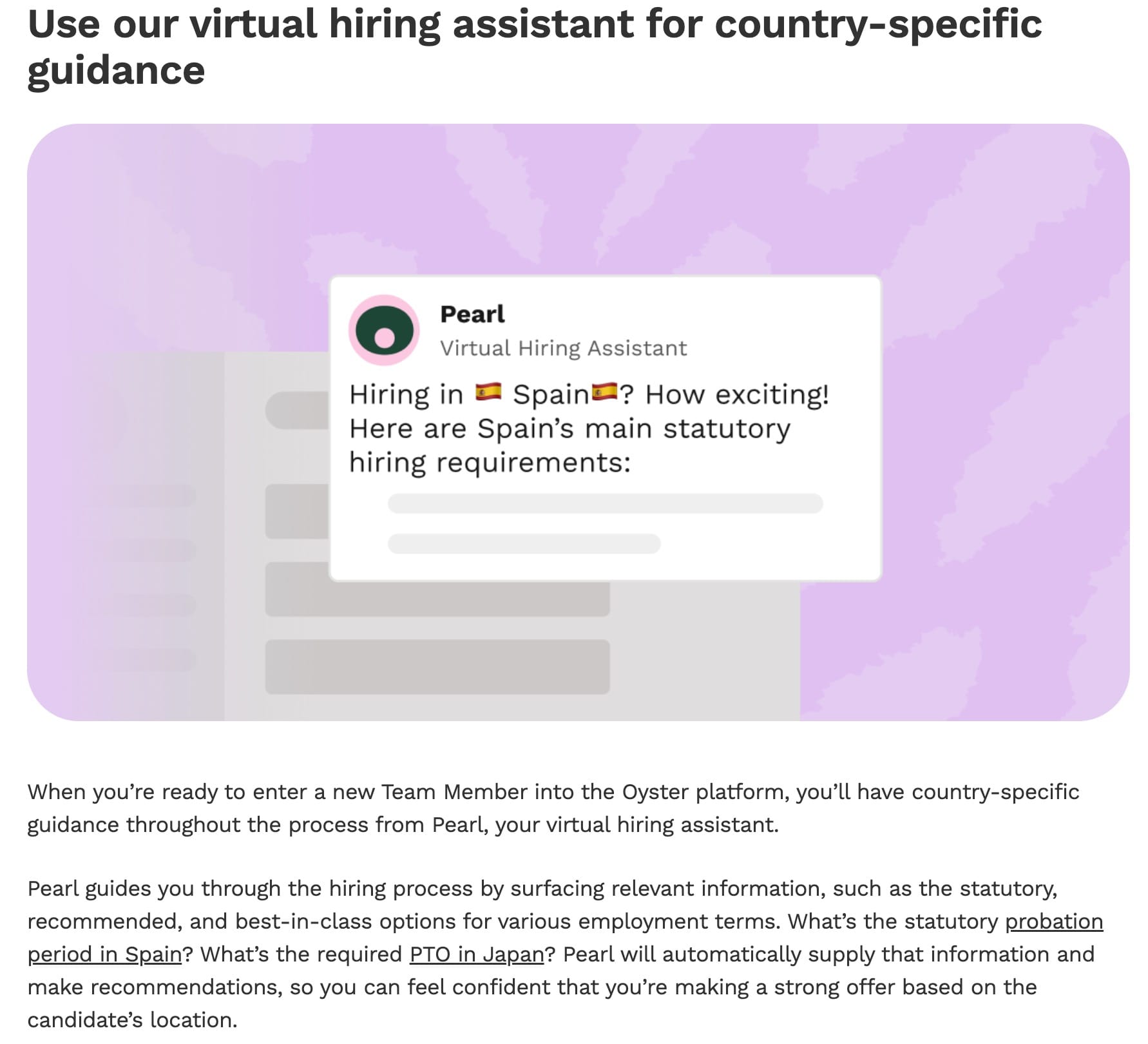
Teaser post
A teaser post is a social media post that doesn’t reveal what you’re building, but hints at the benefits it provides (or the problems it solves).
3 announcement posts
When you announce your new feature, we recommend posting once a day for 3 days. This lets you highlight different examples, use cases and problems you solve. Make sure every post introduces something new. If your posts feel repetitive, users stop paying attention.
An example of a social post is from Oyster:
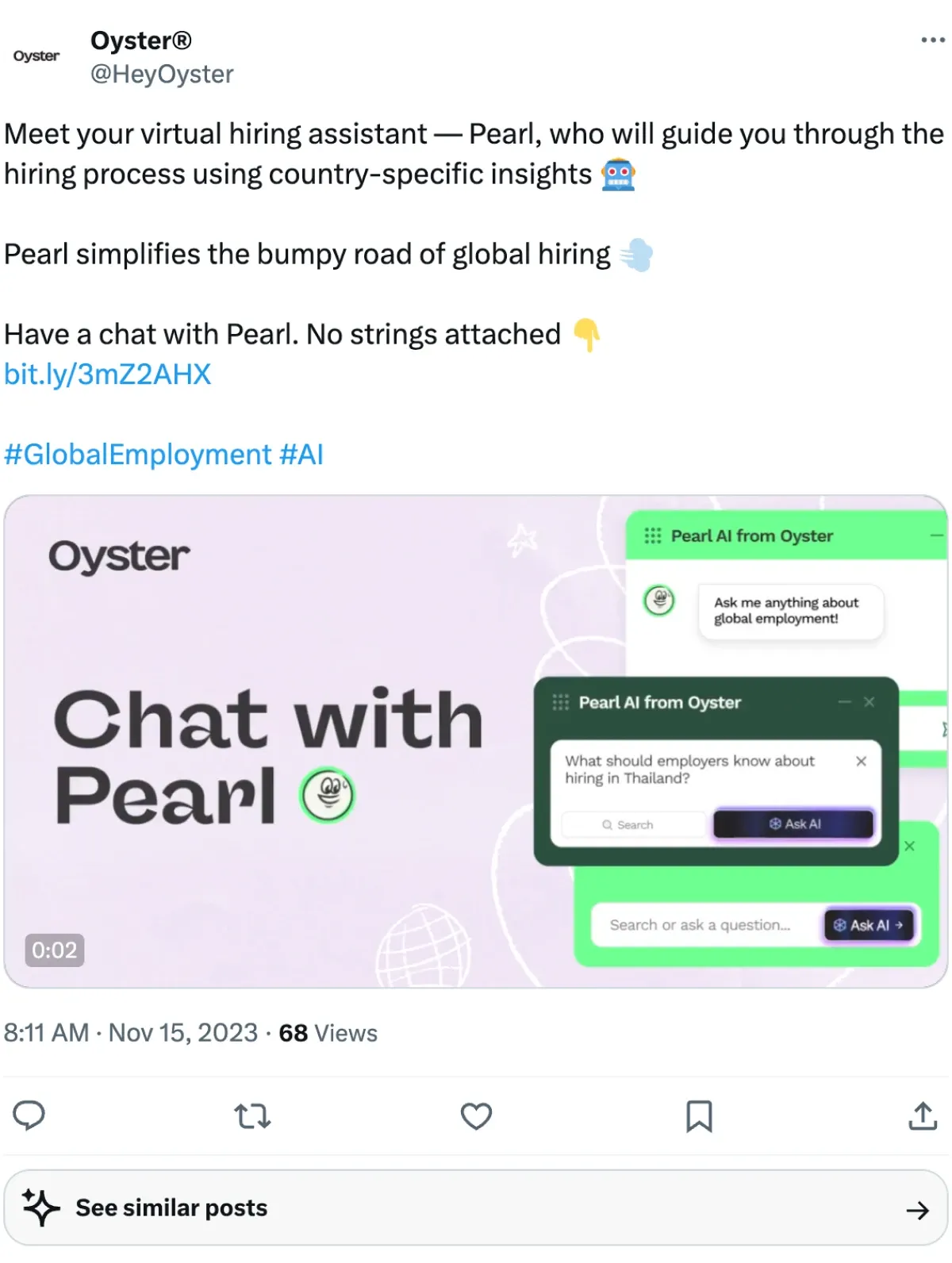
Email newsletter
If you have a solid user base, you probably have a long email list. To launch your feature and make sure it gets adoption, send out an email.
It might sound like an old school marketing channel (and compared to social media it is). But email is one of the best channels for targeting your messaging.
To launch your new feature, you should distinguish between at least two audiences (and send them different messages):
- Current customers: You’ve already won them, so your goal isn’t conversion. But when you inform them about the benefits of your new feature, you can create more activation and engagement.
- Current users: If you have a product-led growth motion, you might have users who aren’t paying, but regularly use your product. If your AI feature is behind the paywall, this could be a good reason to upgrade.
- Non-customers: These users aren’t (yet) convinced of your product and might be evaluating other vendors. That means it’s a good opportunity to differentiate yourself and create a unique positioning for yourself.
And that sets your feature launch up for success!















